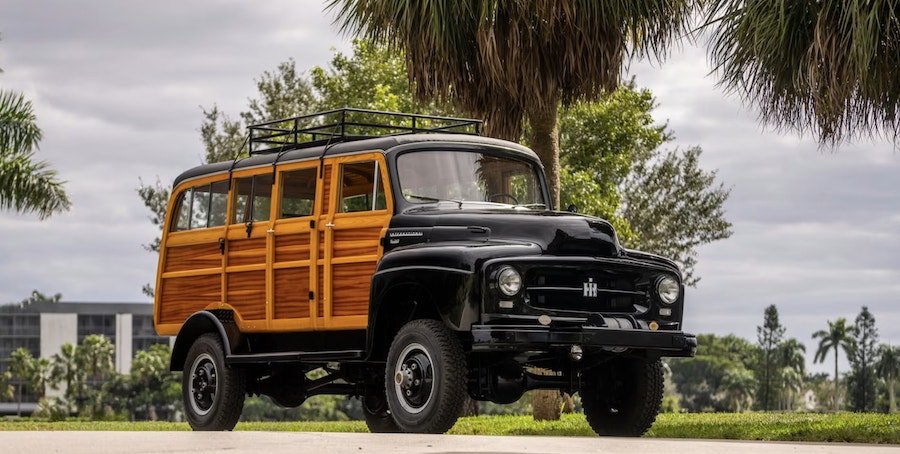1954 International Harvester Woody Used to Carry America's Nuclear Missile Handlers

All while preparing for the next big war, the nuclear one that could end civilization as we know it. For all its optimistic dreams, the decade was at the same time one of great fear. The victorious powers from the war were quickly getting at each others' throats, threatening to obliterate civilization just to prove a point with weapons the likes of which the world had never seen before.
The 1950s, but also the following decade, were a time when the most impressive advancements in the field of nuclear weapons were made. Big bombs aside, it was the time when America developed the mighty LGM-30 Minuteman, a land-based intercontinental ballistic missile (ICBM) that could be launched from silos at strike at the heart of the enemy over 5,500 miles (8,800 km) away.
The first Minuteman came into existence from the hands of Boeing in 1962, and its descendants, the Minuteman IIIs, are still in use today. Sure, they will soon be replaced by the more modern LGM-35A Sentinel, but the impact of the missile family on international order can never be denied.
Operating the Minuteman missiles at the bases where they were present always required armies of people, sworn to secrecy to some degree. The same happened at the Minuteman Missile System in South Dakota, the place where the nation now houses the Minuteman Missile National Historic Site.
Operational from 1963 until the early 1990s, the place was where America hid one of the over 1,000 Minuteman missiles made, equipped with a 1.2-megaton nuclear warhead. Handling it were soldiers from the Army Corps of Engineers.
The Chief Engineers deployed on site were transported on the premises of the base by means of vehicles, including a series of International Harvester wagons. And the one sitting before you now is one of the vehicles that served the soldiers' needs in South Dakota.
History notes that the Army Corps of Engineers ordered a total of just five such wagons for the needs of Minuteman handlers in the state, and this is one of them. In fact, it is one of just three examples known to have survived, and the only one that has been restored to concours-level condition.
Part of the R series that ran from 1953 to 1972 (an R140, to be precise), the wagon looks and works just like it did when it used to carry Army engineers, and that is what it bets on to get a high sale figure when it goes under the hammer in January.
The first thing that strikes you is just how fresh the thing looks. Boasting a black body and an equally black interior, the Harvester instantly catches the eye thanks to the impressive wood paneling that surrounds the habitat.
The panels are not something that was quickly installed for the sake of the restoration process, but were built to match the native ones using the original wood as a template. Inside, the wagon boasts the same warmth and elegance that only extensive use of wood can bestow on a vehicle.
The Harvester, chassis no. 785, still uses its original engine, which is a six-cylinder, 240ci powerplant, tied to a three-speed manual transmission and a four-wheel drive system.
The quality of the work performed on the vehicle did not go unnoticed and it landed the build several awards, including the AACA National First Prize, the AACA Special National Award, and the People's Choice Best of Show at the Boca Raton Concours.
As said, the wagon is for sale, and it will go under the hammer in January at the hands of auction house Mecum, in an event that's to be held in Kissimmee, Florida. The seller does not say how much they expect to fetch for this little piece of American nuclear history, but there seems to be a reserve (undisclosed) of the Harvester.
We were unable to find any records of this particular wagon having been sold before, so it's impossible for us to give you an estimate of its possible sale price.
Whoever gets their hands on it, though, needs to know that the wagon comes with a VIN/tag that was applied in a non-traditional manner, and that could meant that, in some states, authorities may require a state inspection and a state issued VIN.
We’ll keep an eye on the 1954 International Harvester R140 to see how it does during the sale and, if the numbers are impressive enough, we'll naturally let you know all about it.










Verwandte Nachrichten
